#Django REST Framework
Explore tagged Tumblr posts
Text
Implementing Throttling and Rate Limiting in Django REST Framework
Introduction:In today’s API-driven world, ensuring that your API is secure and efficient is crucial. One way to achieve this is by implementing throttling and rate limiting in your Django REST Framework (DRF) applications. Throttling controls the rate at which clients can make requests to your API, helping to prevent abuse and ensuring that your server resources are not overwhelmed by excessive…
0 notes
Text
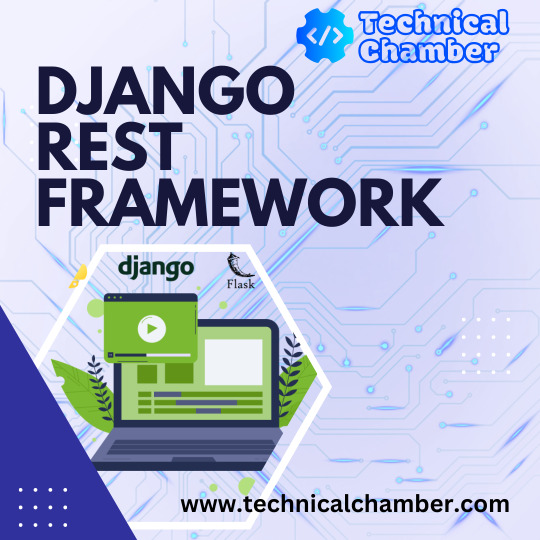
you can implement nested serializers in the Django Rest Framework (DRF) to handle complex data structures where one or more serializers are nested within another serializer. This is often used when dealing with related models or complex data relationships in your API.
0 notes
Text
Building RESTful APIs with Django Rest Framework
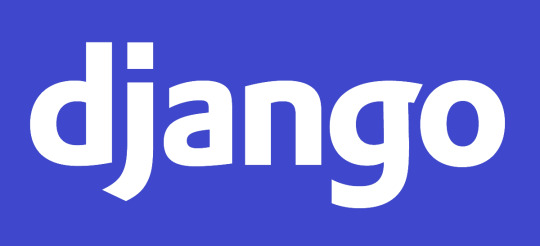
Are you looking to unlock the full potential of Django for creating robust and efficient RESTful APIs?
In the fast-paced world of web development, building RESTful APIs is a critical skill, and Django Rest Framework (DRF) is here to streamline the process. In this article, we'll dive into the world of DRF, exploring its features and best practices for building RESTful APIs using Python and Django.
Whether you're a seasoned developer or just starting out, understanding DRF is essential for creating scalable, maintainable, and secure APIs that can power your web and mobile applications. Let's get started:
Introduction to Django Rest Framework (DRF)
Django Rest Framework (DRF) is a powerful and popular toolkit for building RESTful APIs in Python, specifically designed to work seamlessly with the Django web framework. It provides a set of tools and abstractions that simplify the process of creating robust and efficient APIs. Here's a brief introduction to DRF:
Why use DRF for building APIs?
Integration with Django: DRF seamlessly integrates with Django, taking advantage of its features like authentication, ORM, and request handling. This makes it an excellent choice for developers already familiar with Django.
Productivity: DRF offers a high level of abstraction, reducing the amount of boilerplate code required to build APIs. This accelerates development and allows developers to focus on business logic rather than low-level implementation details.
Flexibility: DRF is highly customizable, allowing developers to tailor their APIs to specific requirements. It supports a variety of authentication methods, serialization options, and view types, accommodating different use cases.
Core Features and Benefits
Serialization: DRF provides powerful serialization tools for converting complex data types, such as Django models, into JSON or other content types, making it easy to send and receive data over HTTP.
Authentication and Permissions: DRF includes built-in authentication classes and permission systems, ensuring secure access control to your API endpoints.
View classes: DRF offers a wide range of view classes, including generic views for common CRUD operations and class-based views that simplify API development.
Throttling and Rate Limiting: DRF provides tools for controlling API access through throttling and rate limiting, which can help manage server resources and prevent abuse.
Browsable API: DRF includes a browsable API feature that generates interactive documentation, making it easier for developers to understand and test API endpoints.
Django Rest Framework is a valuable tool for building RESTful APIs in Python due to its seamless integration with Django, productivity-enhancing features, flexibility, and a rich set of built-in functionalities that simplify the development process while ensuring security and scalability.
Setting Up DRF in Your Django Project
Setting up Django Rest Framework (DRF) in your Django project involves two main steps: installation and configuration of settings.
1. Installation and Prerequisites
Before you can start using DRF, you need to ensure you have a Django project up and running. Assuming you have a Django project ready, you can install DRF using a package manager like pip. Open your terminal and run:

This command installs DRF and its dependencies into your Python environment. It's also important to make sure you have the necessary prerequisites installed, which include Python, Django, and a database engine like PostgreSQL or MySQL.
2. Configuring Settings for DRF
Once DRF is installed, you need to configure it in your Django project. In your project's settings.py file, you should add 'rest_framework' to the `INSTALLED_APPS` list to enable DRF:

Additionally, you might want to customize DRF settings according to your project's requirements. You can do this by adding configurations like authentication classes, permission classes, and other settings to your settings.py file.
With these two steps completed, your Django project is set up to use DRF for building RESTful APIs, allowing you to easily create, manage, and expose APIs in your application.
Core Components of DRF
Django Rest Framework (DRF) is a powerful tool for building RESTful APIs in Django applications. Its core components play pivotal roles in structuring and simplifying the API development process.
1. Serializers are a fundamental part of DRF. They provide a way to convert complex data types, such as Django model instances or Python dictionaries, into JSON or other content types that can be easily rendered into HTTP responses. Serializers also handle deserialization, parsing the received data back into complex types, validating it in the process. This ensures that data sent to your API adheres to the expected format, helping maintain data consistency and integrity.
2. Views and ViewSets are responsible for defining the API's behavior. Views are essentially functions or classes that handle HTTP requests and return HTTP responses. ViewSets, on the other hand, provide a higher-level, more concise way to define views for CRUD (Create, Read, Update, Delete) operations on API resources. They offer a streamlined approach to defining the API's behavior for different HTTP methods, such as GET, POST, PUT, DELETE, and more.
3. Routers and URL configurations play a crucial role in mapping API endpoints to views or ViewSets. DRF provides routers that automatically generate URL patterns for your API based on the defined ViewSets, simplifying URL routing. This simplifies the process of mapping URLs to view functions or classes, ensuring that the API is well-organized and adheres to RESTful principles.
Serializers ensure data consistency and validation, views and ViewSets define the API's behavior, and routers simplify URL routing, collectively forming the core components of Django Rest Framework for building RESTful APIs. These components work together to streamline the development of robust and maintainable APIs in Django applications.
Handling CRUD Operations
Handling CRUD operations in Django Rest Framework (DRF) involves creating API endpoints to perform Create, Read, Update, and Delete actions on your data.
Create: To allow clients to create new data, you'll define an endpoint (e.g., POST /api/resource/) and handle incoming POST requests. This request method lets clients send data that your API will use to create new records in the database.
Read: For reading data, you'll typically set up endpoints using GET requests (e.g., GET /api/resource/ or GET /api/resource/{id}). These endpoints retrieve data from your database and return it to the client, allowing them to access information.
Update: To modify existing data, you'll use the PUT or PATCH methods (e.g., PUT /api/resource/{id} or PATCH /api/resource/{id}). PUT replaces the entire resource, while PATCH allows partial updates. The client sends the updated data, and your API applies the changes.
Delete: Deleting data is done with the DELETE method (e.g., DELETE /api/resource/{id}). When a client sends a DELETE request, your API locates the specified resource and removes it from the database.
By defining these API endpoints, you provide a structured way for clients to interact with your application's data. DRF makes it easier to work with different request methods (GET, POST, PUT, PATCH, DELETE) by automatically handling serialization, validation, and database operations, streamlining the process of building RESTful APIs with Django.
Advanced Features and Best Practices
Advanced Features and Best Practices in building RESTful APIs with Django Rest Framework involve implementing pagination, filtering, searching, as well as authenticating and authorizing API endpoints.
1. Pagination: As your API grows, handling large datasets efficiently becomes crucial. Django Rest Framework offers built-in support for pagination. By configuring pagination settings, you can limit the number of results returned per request. This prevents overloading clients with excessive data and enhances response times. Common pagination methods include page-based and cursor-based pagination.
2. Filtering and Searching: Django Rest Framework allows you to implement filtering and searching mechanisms to facilitate data retrieval. You can filter results based on specific criteria (e.g., date range, category) or perform keyword searches. These features empower clients to request tailored datasets, improving the usability of your API.
3. Authentication and Authorization: Securing your API is paramount. Authentication verifies the identity of users, while authorization determines what actions they can perform. Django Rest Framework provides various authentication methods (e.g., token-based, OAuth2) to control access. You can also use decorators and permission classes to specify who can access specific endpoints and what they can do (e.g., read-only, read-write).
Implementing these advanced features and adhering to best practices ensures that your Django Rest Framework-based API is scalable, user-friendly, and secure, enhancing the overall developer and user experience. If you're looking for a Django development company to help you with your project, contact us today.
Wrapping Up
Mastering Django Rest Framework empowers developers to create powerful, well-structured RESTful APIs efficiently. Its robust features and best practices ensure scalability, maintainability, and security. By embracing DRF, you're equipped to meet the demands of modern web and mobile application development, delivering seamless user experiences. Finally, explore the top python frameworks to further enhance your Python development journey.
In conclusion, mastering RESTful APIs with Django Rest Framework opens doors to endless possibilities. Finoit and CEO Yogesh Choudhary inspire us to innovate, creating seamless digital experiences. Embrace the power of RESTful APIs, and let your ideas transform the digital landscape.
0 notes
Text
Little Mistakes With Reverse Relationships in Django REST Framework
Last night I had the most frustrating issue with Django REST Framework and wanted to write a little tip in case it could help someone else.
Mainly, I wanted to make this DRF guide easier to understand for Django newbies like me.
If you find yourself in a situation where you have 2 models, let's say "Album" and "Track" like in the documentation, you may have a relationship between them. Typically, an album has a number of tracks, but every track is from only one album. So, maybe you'd have a field in Track listed as "Album" that's just a foreign key to relate your Track to an Album.
class Album(models.Model): album_name = models.CharField(max_length=100) artist = models.CharField(max_length=100) class Track(models.Model): album = models.ForeignKey(Album, related_name='tracks', on_delete=models.CASCADE) order = models.IntegerField() title = models.CharField(max_length=100) duration = models.IntegerField() class Meta: unique_together = ['album', 'order'] ordering = ['order'] def __str__(self): return '%d: %s' % (self.order, self.title)
So I've put in orange the ForeignKey in track. The documentation mentions that you can use "StringRelatedField", "PrimaryKeyRelatedField", "HyperlinkedRelatedField", and "SlugRelatedField." Everything is pretty simple to follow along but where I messed up was not reading the "Reverse Relations" section.
See, I was trying to get my own 2 models to work properly but NOTHING I was doing was getting my serializer to acknowledge the foreign key... turns out the "related_name" attribute when you're in your model code is the missing piece 🤦. So make sure you read through the docs fully and set yourself a good "related_name", because that's how you'll refer to that field in your serializer.
0 notes
Text
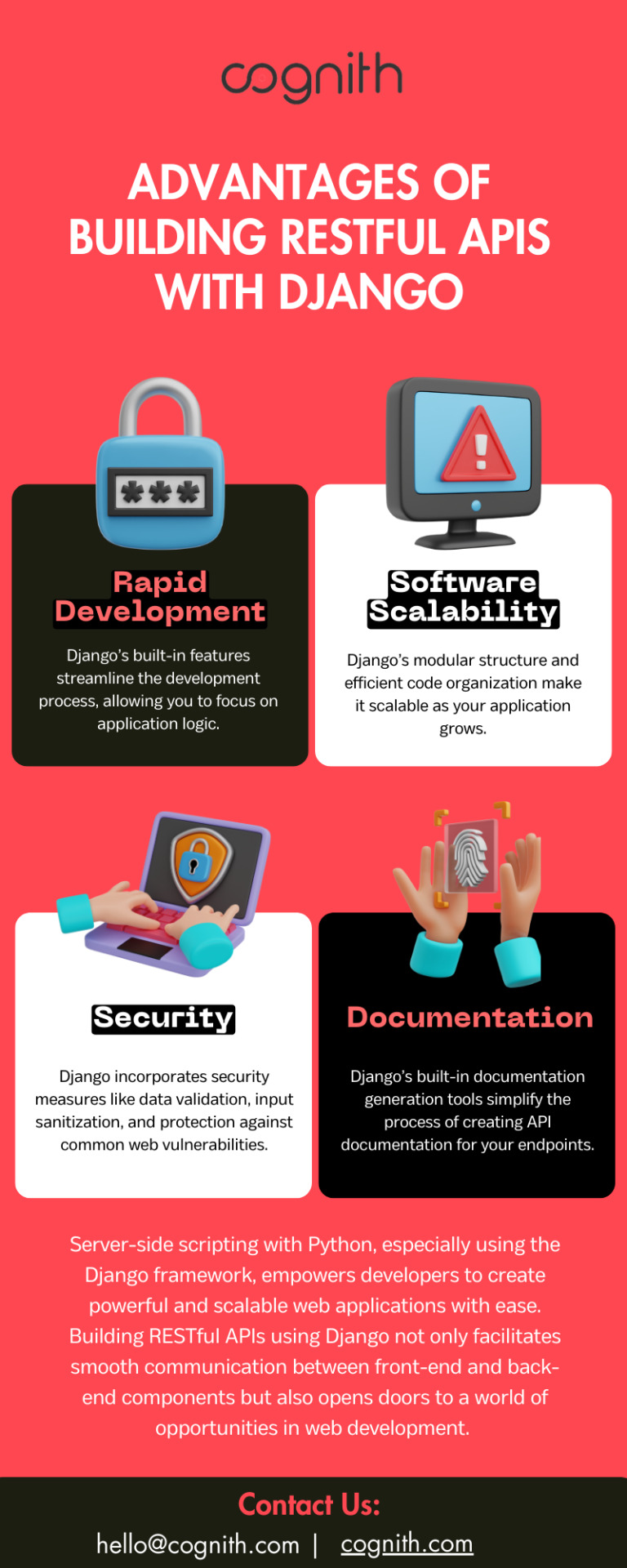
Server-Side Scripting Explained: Simplifying Web Development
Explore how server-side scripting works, from processing user requests to delivering customized content. Learn the benefits for both developers and users.
0 notes
Text
Full Stack Testing vs. Full Stack Development: What’s the Difference?

In today’s fast-evolving tech world, buzzwords like Full Stack Development and Full Stack Testing have gained immense popularity. Both roles are vital in the software lifecycle, but they serve very different purposes. Whether you’re a beginner exploring your career options or a professional looking to expand your skills, understanding the differences between Full Stack Testing and Full Stack Development is crucial. Let’s dive into what makes these two roles unique!
What Is Full Stack Development?
Full Stack Development refers to the ability to build an entire software application – from the user interface to the backend logic – using a wide range of tools and technologies. A Full Stack Developer is proficient in both front-end (user-facing) and back-end (server-side) development.
Key Responsibilities of a Full Stack Developer:
Front-End Development: Building the user interface using tools like HTML, CSS, JavaScript, React, or Angular.
Back-End Development: Creating server-side logic using languages like Node.js, Python, Java, or PHP.
Database Management: Handling databases such as MySQL, MongoDB, or PostgreSQL.
API Integration: Connecting applications through RESTful or GraphQL APIs.
Version Control: Using tools like Git for collaborative development.
Skills Required for Full Stack Development:
Proficiency in programming languages (JavaScript, Python, Java, etc.)
Knowledge of web frameworks (React, Django, etc.)
Experience with databases and cloud platforms
Understanding of DevOps tools
In short, a Full Stack Developer handles everything from designing the UI to writing server-side code, ensuring the software runs smoothly.
What Is Full Stack Testing?
Full Stack Testing is all about ensuring quality at every stage of the software development lifecycle. A Full Stack Tester is responsible for testing applications across multiple layers – from front-end UI testing to back-end database validation – ensuring a seamless user experience. They blend manual and automation testing skills to detect issues early and prevent software failures.
Key Responsibilities of a Full Stack Tester:
UI Testing: Ensuring the application looks and behaves correctly on the front end.
API Testing: Validating data flow and communication between services.
Database Testing: Verifying data integrity and backend operations.
Performance Testing: Ensuring the application performs well under load using tools like JMeter.
Automation Testing: Automating repetitive tests with tools like Selenium or Cypress.
Security Testing: Identifying vulnerabilities to prevent cyber-attacks.
Skills Required for Full Stack Testing:
Knowledge of testing tools like Selenium, Postman, JMeter, or TOSCA
Proficiency in both manual and automation testing
Understanding of test frameworks like TestNG or Cucumber
Familiarity with Agile and DevOps practices
Basic knowledge of programming for writing test scripts
A Full Stack Tester plays a critical role in identifying bugs early in the development process and ensuring the software functions flawlessly.
Which Career Path Should You Choose?
The choice between Full Stack Development and Full Stack Testing depends on your interests and strengths:
Choose Full Stack Development if you love coding, creating interfaces, and building software solutions from scratch. This role is ideal for those who enjoy developing creative products and working with both front-end and back-end technologies.
Choose Full Stack Testing if you have a keen eye for detail and enjoy problem-solving by finding bugs and ensuring software quality. If you love automation, performance testing, and working with multiple testing tools, Full Stack Testing is the right path.
Why Both Roles Are Essential :
Both Full Stack Developers and Full Stack Testers are integral to software development. While developers focus on creating functional features, testers ensure that everything runs smoothly and meets user expectations. In an Agile or DevOps environment, these roles often overlap, with testers and developers working closely to deliver high-quality software in shorter cycles.
Final Thoughts :
Whether you opt for Full Stack Testing or Full Stack Development, both fields offer exciting opportunities with tremendous growth potential. With software becoming increasingly complex, the demand for skilled developers and testers is higher than ever.
At TestoMeter Pvt. Ltd., we provide comprehensive training in both Full Stack Development and Full Stack Testing to help you build a future-proof career. Whether you want to build software or ensure its quality, we’ve got the perfect course for you.
Ready to take the next step? Explore our Full Stack courses today and start your journey toward a successful IT career!
This blog not only provides a crisp comparison but also encourages potential students to explore both career paths with TestoMeter.
For more Details :
Interested in kick-starting your Software Developer/Software Tester career? Contact us today or Visit our website for course details, success stories, and more!
🌐visit - https://www.testometer.co.in/
2 notes
·
View notes
Text
Navigating the Full Stack: A Holistic Approach to Web Development Mastery
Introduction: In the ever-evolving world of web development, full stack developers are the architects behind the seamless integration of frontend and backend technologies. Excelling in both realms is essential for creating dynamic, user-centric web applications. In this comprehensive exploration, we'll embark on a journey through the multifaceted landscape of full stack development, uncovering the intricacies of crafting compelling user interfaces and managing robust backend systems.

Frontend Development: Crafting Engaging User Experiences
1. Markup and Styling Mastery:
HTML (Hypertext Markup Language): Serves as the foundation for structuring web content, providing the framework for user interaction.
CSS (Cascading Style Sheets): Dictates the visual presentation of HTML elements, enhancing the aesthetic appeal and usability of web interfaces.
2. Dynamic Scripting Languages:
JavaScript: Empowers frontend developers to add interactivity and responsiveness to web applications, facilitating seamless user experiences.
Frontend Frameworks and Libraries: Harness the power of frameworks like React, Angular, or Vue.js to streamline development and enhance code maintainability.
3. Responsive Design Principles:
Ensure web applications are accessible and user-friendly across various devices and screen sizes.
Implement responsive design techniques to adapt layout and content dynamically, optimizing user experiences for all users.
4. User-Centric Design Practices:
Employ UX design methodologies to create intuitive interfaces that prioritize user needs and preferences.
Conduct usability testing and gather feedback to refine interface designs and enhance overall user satisfaction.

Backend Development: Managing Data and Logic
1. Server-side Proficiency:
Backend Programming Languages: Utilize languages like Node.js, Python, Ruby, or Java to implement server-side logic and handle client requests.
Server Frameworks and Tools: Leverage frameworks such as Express.js, Django, or Ruby on Rails to expedite backend development and ensure scalability.
2. Effective Database Management:
Relational and Non-relational Databases: Employ databases like MySQL, PostgreSQL, MongoDB, or Firebase to store and manage structured and unstructured data efficiently.
API Development: Design and implement RESTful or GraphQL APIs to facilitate communication between the frontend and backend components of web applications.
3. Security and Performance Optimization:
Implement robust security measures to safeguard user data and protect against common vulnerabilities.
Optimize backend performance through techniques such as caching, query optimization, and load balancing, ensuring optimal application responsiveness.
Full Stack Development: Harmonizing Frontend and Backend
1. Seamless Integration of Technologies:
Cultivate expertise in both frontend and backend technologies to facilitate seamless communication and collaboration across the development stack.
Bridge the gap between user interface design and backend functionality to deliver cohesive and impactful web experiences.
2. Agile Project Management and Collaboration:
Collaborate effectively with cross-functional teams, including designers, product managers, and fellow developers, to plan, execute, and deploy web projects.
Utilize agile methodologies and version control systems like Git to streamline collaboration and track project progress efficiently.
3. Lifelong Learning and Adaptation:
Embrace a growth mindset and prioritize continuous learning to stay abreast of emerging technologies and industry best practices.
Engage with online communities, attend workshops, and pursue ongoing education opportunities to expand skill sets and remain competitive in the evolving field of web development.
Conclusion: Mastering full stack development requires a multifaceted skill set encompassing frontend design principles, backend architecture, and effective collaboration. By embracing a holistic approach to web development, full stack developers can craft immersive user experiences, optimize backend functionality, and navigate the complexities of modern web development with confidence and proficiency.
#full stack developer#education#information#full stack web development#front end development#frameworks#web development#backend#full stack developer course#technology
2 notes
·
View notes
Text
25 Python Projects to Supercharge Your Job Search in 2024

Introduction: In the competitive world of technology, a strong portfolio of practical projects can make all the difference in landing your dream job. As a Python enthusiast, building a diverse range of projects not only showcases your skills but also demonstrates your ability to tackle real-world challenges. In this blog post, we'll explore 25 Python projects that can help you stand out and secure that coveted position in 2024.
1. Personal Portfolio Website
Create a dynamic portfolio website that highlights your skills, projects, and resume. Showcase your creativity and design skills to make a lasting impression.
2. Blog with User Authentication
Build a fully functional blog with features like user authentication and comments. This project demonstrates your understanding of web development and security.
3. E-Commerce Site
Develop a simple online store with product listings, shopping cart functionality, and a secure checkout process. Showcase your skills in building robust web applications.
4. Predictive Modeling
Create a predictive model for a relevant field, such as stock prices, weather forecasts, or sales predictions. Showcase your data science and machine learning prowess.
5. Natural Language Processing (NLP)
Build a sentiment analysis tool or a text summarizer using NLP techniques. Highlight your skills in processing and understanding human language.
6. Image Recognition
Develop an image recognition system capable of classifying objects. Demonstrate your proficiency in computer vision and deep learning.
7. Automation Scripts
Write scripts to automate repetitive tasks, such as file organization, data cleaning, or downloading files from the internet. Showcase your ability to improve efficiency through automation.
8. Web Scraping
Create a web scraper to extract data from websites. This project highlights your skills in data extraction and manipulation.
9. Pygame-based Game
Develop a simple game using Pygame or any other Python game library. Showcase your creativity and game development skills.
10. Text-based Adventure Game
Build a text-based adventure game or a quiz application. This project demonstrates your ability to create engaging user experiences.
11. RESTful API
Create a RESTful API for a service or application using Flask or Django. Highlight your skills in API development and integration.
12. Integration with External APIs
Develop a project that interacts with external APIs, such as social media platforms or weather services. Showcase your ability to integrate diverse systems.
13. Home Automation System
Build a home automation system using IoT concepts. Demonstrate your understanding of connecting devices and creating smart environments.
14. Weather Station
Create a weather station that collects and displays data from various sensors. Showcase your skills in data acquisition and analysis.
15. Distributed Chat Application
Build a distributed chat application using a messaging protocol like MQTT. Highlight your skills in distributed systems.
16. Blockchain or Cryptocurrency Tracker
Develop a simple blockchain or a cryptocurrency tracker. Showcase your understanding of blockchain technology.
17. Open Source Contributions
Contribute to open source projects on platforms like GitHub. Demonstrate your collaboration and teamwork skills.
18. Network or Vulnerability Scanner
Build a network or vulnerability scanner to showcase your skills in cybersecurity.
19. Decentralized Application (DApp)
Create a decentralized application using a blockchain platform like Ethereum. Showcase your skills in developing applications on decentralized networks.
20. Machine Learning Model Deployment
Deploy a machine learning model as a web service using frameworks like Flask or FastAPI. Demonstrate your skills in model deployment and integration.
21. Financial Calculator
Build a financial calculator that incorporates relevant mathematical and financial concepts. Showcase your ability to create practical tools.
22. Command-Line Tools
Develop command-line tools for tasks like file manipulation, data processing, or system monitoring. Highlight your skills in creating efficient and user-friendly command-line applications.
23. IoT-Based Health Monitoring System
Create an IoT-based health monitoring system that collects and analyzes health-related data. Showcase your ability to work on projects with social impact.
24. Facial Recognition System
Build a facial recognition system using Python and computer vision libraries. Showcase your skills in biometric technology.
25. Social Media Dashboard
Develop a social media dashboard that aggregates and displays data from various platforms. Highlight your skills in data visualization and integration.
Conclusion: As you embark on your job search in 2024, remember that a well-rounded portfolio is key to showcasing your skills and standing out from the crowd. These 25 Python projects cover a diverse range of domains, allowing you to tailor your portfolio to match your interests and the specific requirements of your dream job.
If you want to know more, Click here:https://analyticsjobs.in/question/what-are-the-best-python-projects-to-land-a-great-job-in-2024/
#python projects#top python projects#best python projects#analytics jobs#python#coding#programming#machine learning
2 notes
·
View notes
Text
Python FullStack Developer Jobs

Introduction :
A Python full-stack developer is a professional who has expertise in both front-end and back-end development using Python as their primary programming language. This means they are skilled in building web applications from the user interface to the server-side logic and the database. Here’s some information about Python full-stack developer jobs.
Job Responsibilities:
Front-End Development: Python full-stack developers are responsible for creating and maintaining the user interface of a web application. This involves using front-end technologies like HTML, CSS, JavaScript, and various frameworks like React, Angular, or Vue.js.
Back-End Development: They also work on the server-side of the application, managing databases, handling HTTP requests, and building the application’s logic. Python, along with frameworks like Django, Flask, or Fast API, is commonly used for back-end development.
Database Management: Full-stack developers often work with databases like PostgreSQL, MySQL, or NoSQL databases like MongoDB to store and retrieve data.
API Development: Creating and maintaining APIs for communication between the front-end and back-end systems is a crucial part of the job. RESTful and Graph QL APIs are commonly used.
Testing and Debugging: Full-stack developers are responsible for testing and debugging their code to ensure the application’s functionality and security.
Version Control: Using version control systems like Git to track changes and collaborate with other developers.
Deployment and DevOps: Deploying web applications on servers, configuring server environments, and implementing continuous integration/continuous deployment (CI/CD) pipelines.
Security: Ensuring the application is secure by implementing best practices and security measures to protect against common vulnerabilities.
Skills and Qualifications:
To excel in a Python full-stack developer role, you should have the following skills and qualifications:
Proficiency in Python programming.
Strong knowledge of front-end technologies (HTML, CSS, JavaScript) and frameworks.
Expertise in back-end development using Python and relevant web frameworks.
Experience with databases and data modeling.
Knowledge of version control systems (e.g., Git).
Familiarity with web servers and deployment.
Understanding of web security and best practices.
Problem-solving and debugging skills.
Collaboration and teamwork.
Continuous learning and staying up to date with the latest technologies and trends.
Job Opportunities:
Python full-stack developers are in demand in various industries, including web development agencies, e-commerce companies, startups, and large enterprises. Job titles you might come across include Full-Stack Developer, Python Developer, Web Developer, or Software Engineer.
The job market for Python full-stack developers is generally favorable, and these professionals can expect competitive salaries, particularly with experience and a strong skill set. Many companies appreciate the versatility of full-stack developers who can work on both the front-end and back-end aspects of their web applications.
To find Python full-stack developer job opportunities, you can check job boards, company career pages, and professional networking sites like LinkedIn. Additionally, you can work with recruitment agencies specializing in tech roles or attend tech job fairs and conferences to network with potential employers.
Python full stack developer jobs offer a range of advantages to those who pursue them. Here are some of the key advantages of working as a Python full stack developer:
Versatility: Python is a versatile programming language, and as a full stack developer, you can work on both front-end and back-end development, as well as other aspects of web development. This versatility allows you to work on a wide range of projects and tasks.
High demand: Python is one of the most popular programming languages, and there is a strong demand for Python full stack developers. This high demand leads to ample job opportunities and competitive salaries.
Job security: With the increasing reliance on web and mobile applications, the demand for full stack developers is expected to remain high. This job security provides a sense of stability and long-term career prospects.
Wide skill set: As a full stack developer, you gain expertise in various technologies and frameworks for both front-end and back-end development, including Django, Flask, JavaScript, HTML, CSS, and more. This wide skill set makes you a valuable asset to any development team.
Collaboration: Full stack developers often work closely with both front-end and back-end teams, fostering collaboration and communication within the development process. This can lead to a more holistic understanding of projects and better teamwork.
Problem-solving: Full stack developers often encounter challenges that require them to think critically and solve complex problems. This aspect of the job can be intellectually stimulating and rewarding.
Learning opportunities: The tech industry is constantly evolving, and full stack developers have the opportunity to continually learn and adapt to new technologies and tools. This can be personally fulfilling for those who enjoy ongoing learning.
Competitive salaries: Python full stack developers are typically well-compensated due to their valuable skills and the high demand for their expertise. Salaries can vary based on experience, location, and the specific organization.
Entrepreneurial opportunities: With the knowledge and skills gained as a full stack developer, you can also consider creating your own web-based projects or startup ventures. Python’s ease of use and strong community support can be particularly beneficial in entrepreneurial endeavors.
Remote work options: Many organizations offer remote work opportunities for full stack developers, allowing for greater flexibility in terms of where you work. This can be especially appealing to those who prefer a remote or freelance lifestyle.
Open-source community: Python has a vibrant and active open-source community, which means you can easily access a wealth of libraries, frameworks, and resources to enhance your development projects.
Career growth: As you gain experience and expertise, you can advance in your career and explore specialized roles or leadership positions within development teams or organizations.
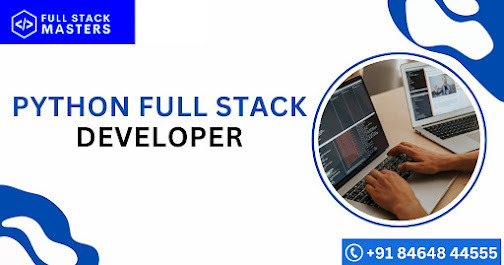
Conclusion:
Python full stack developer jobs offer a combination of technical skills, career stability, and a range of opportunities in the tech industry. If you enjoy working on both front-end and back-end aspects of web development and solving complex problems, this career path can be a rewarding choice.
Thanks for reading, hopefully you like the article if you want to take Full stack master's course from our Institute, please attend our live demo sessions or contact us: +918464844555 providing you with the best Online Full Stack Developer Course in Hyderabad with an affordable course fee structure.
2 notes
·
View notes
Text
Full-Stack Web Development In 7 days Ebook
Title: Full-Stack Web Development in 7 Days: Your Comprehensive Guide to Building Dynamic Websites
Introduction: Are you eager to embark on a journey to become a full-stack web developer? Look no further! In this comprehensive ebook, "Full-Stack Web Development in 7 Days," we will guide you through the fundamental concepts and practical skills necessary to build dynamic websites from front to back. Whether you're a beginner or an experienced programmer looking to expand your skill set, this guide will equip you with the knowledge and tools to kickstart your journey as a full-stack web developer in just one week.
Day 1: Introduction to Web Development:
Understand the foundations of web development, including the client-server architecture and HTTP protocol.
Learn HTML, CSS, and JavaScript—the building blocks of any web application.
Dive into the basics of responsive web design and create your first static webpage.
Day 2: Front-End Development:
Explore the world of front-end development frameworks like Bootstrap and learn how to build responsive and visually appealing user interfaces.
Master JavaScript libraries such as jQuery to add interactivity and dynamic elements to your web pages.
Gain hands-on experience with front-end frameworks like React or Angular to create robust single-page applications.
Day 3: Back-End Development:
Discover the essentials of back-end development using popular programming languages like Python, JavaScript (Node.js), or Ruby.
Learn about server-side frameworks such as Express, Django, or Ruby on Rails to build powerful back-end applications.
Connect your front-end and back-end components, enabling them to communicate and exchange data seamlessly.
Day 4: Databases and Data Management:
Dive into the world of databases and understand the difference between relational and NoSQL databases.
Learn how to work with popular databases like MySQL, PostgreSQL, or MongoDB.
Implement database integration into your web applications, enabling data storage, retrieval, and manipulation.
Day 5: API Development and Integration:
Explore the fundamentals of RESTful APIs and their role in modern web development.
Build your own APIs using frameworks like Express or Flask to expose data and functionality to external applications.
Integrate third-party APIs, such as social media APIs or payment gateways, to enhance the functionality of your web applications.
Day 6: Security and Performance Optimization:
Understand common security vulnerabilities in web applications and learn how to protect against them.
Implement authentication and authorization mechanisms to secure user data and control access.
Optimize your web applications for performance, including techniques like caching, code minification, and server-side rendering.
Day 7: Deployment and Continuous Integration:
Learn how to deploy your web applications to a hosting platform or a cloud infrastructure like AWS, Azure, or Heroku.
Set up continuous integration and deployment workflows using tools like Git, GitHub, and Docker.
Finalize your full-stack web development journey by exploring best practices for maintenance, troubleshooting, and scalability.
Conclusion: "Full-Stack Web Development in 7 Days" provides a structured and comprehensive roadmap to help you become a proficient full-stack web developer within a week. By following this ebook, you will gain a solid foundation in front-end and back-end development, databases, APIs, security, performance optimization, and deployment. Get ready to unleash your creativity and embark on an exciting career in web development. Start your journey today and unlock the endless possibilities of building dynamic and interactive websites.
2 notes
·
View notes
Text
Django REST Framework: Authentication and Permissions
Secure Your Django API: Authentication and Permissions with DRF
Introduction Django REST Framework (DRF) is a powerful toolkit for building Web APIs in Django. One of its key features is the ability to handle authentication and permissions, ensuring that your API endpoints are secure and accessible only to authorized users. This article will guide you through setting up authentication and permissions in DRF, including examples and…
#custom permissions#Django API security#Django JWT integration#Django REST Framework#DRF authentication#Python web development#token-based authentication
0 notes
Text
Dive into Python & Full Stack Development with Mr. K.V. Rao! 🚀
Calling all future developers and coding enthusiasts—your gateway to the world of Python just opened! Join Mr. K.V. Rao for a hands‑on Python & Full Stack Python workshop running from 17th to 18th June at 9:00 AM IST. Whether you’re starting from zero or sharpening your skills, this intensive session will empower you to build real‑world web applications from front end to back end.
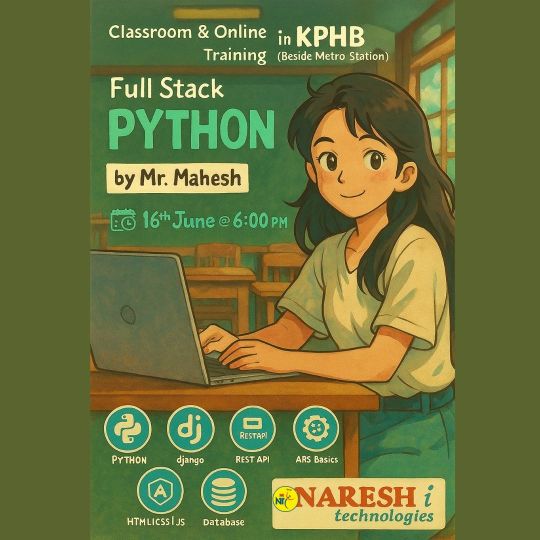
What’s in Store?
Core Python Fundamentals: Variables, loops, functions, and error handling
Web Frameworks: Build dynamic sites using Flask and Django
Frontend Essentials: HTML, CSS, and JavaScript to craft engaging UIs
Database Integration: Connect to MySQL and work with ORM libraries
API Development: Create and consume RESTful services
Deployment Basics: Host your apps on cloud platforms
By the end of Day 2, you’ll have a fully deployed web application in your portfolio—an impressive talking point for interviews and GitHub showcases!
📌 Register Now → https://tr.ee/hhmPC4 💡 Need more info? Feel free to reach out anytime! 🔍 Explore all our free demo courses → https://linktr.ee/ITcoursesFreeDemos
Learning with Mr. Rao ensures you move beyond theory into practical, career‑ready skills. This is more than a workshop—it’s the first step toward your dream tech job. Don’t miss out on two days that could change your future!
#Python#FullStackPython#CodingWorkshop#WebDevelopment#Flask#Django#NareshIT#LearnToCode#TechSkills#CareerReady
0 notes
Text
What Is Server-Side Scripting? A Beginner’s Guide to Dynamic Websites
Learn how server-side scripting powers dynamic websites by handling requests and delivering personalized content. Explore its role in web development without the technical jargon.
0 notes
Text
Full Stack Development Trends in 2025: What to Expect
In the rapidly evolving tech landscape, full stack development continues to be a crucial area for innovation and career growth. As we step into 2025, the demand for skilled professionals who can handle both front-end and back-end technologies is only expected to surge. From artificial intelligence integration to serverless architectures, this field is experiencing some major transformations.
Whether you're a student, a working professional, or someone planning to switch careers, understanding these full stack development trends is essential. And if you're planning to learn full stack development in Pune, one of India’s tech hubs, staying updated with these trends will give you a competitive edge.
Why Full Stack Development Matters More Than Ever
Modern businesses seek agility and efficiency in software development. Full stack developers can handle various layers of a web or app project—from UI/UX to database management and server logic. This ability to operate across multiple domains makes full stack professionals highly valuable.
Here’s what’s changing in 2025 and why it matters:
Key Full Stack Development Trends to Watch in 2025
1. AI and Machine Learning-Driven Development
Integration of AI for predictive user experiences
Chatbots and intelligent systems as part of app architecture
Developers using AI tools to assist with debugging, code generation, and optimization
With these technologies becoming more accessible, full stack developers are expected to understand how AI models work and how to implement them efficiently.
2. Serverless Architectures on the Rise
Reduction in infrastructure management tasks
Focus shifts to writing quality code without worrying about deployment
Increased use of platforms like AWS Lambda, Azure Functions, and Google Cloud Functions
Serverless frameworks will empower developers to build scalable applications faster, and those enrolled in a Java programming course with placement are already being introduced to these platforms as part of their curriculum.
3. Micro Frontends and Component-Based Architectures
Projects are being split into smaller, manageable front-end components
Encourages reuse and parallel development
Helps large teams work on different parts of an application efficiently
This trend is changing the way teams collaborate, especially in agile environments.
4. Progressive Web Applications (PWAs) Becoming the Norm
PWAs offer app-like experiences in browsers
Offline support, push notifications, and fast load times
Ideal for startups and enterprises alike
A full stack developer in 2025 must be proficient in building PWAs using modern tools like React, Angular, and Vue.js.
5. API-First Development
Focus on creating flexible, scalable backend systems
REST and GraphQL APIs powering multiple frontends (web, mobile, IoT)
Encourages modular architecture
Many courses teaching full stack development in Pune are already emphasizing this model to prepare students for real-world industry demands.
6. Focus on Security and Compliance
Developers now need to consider security during initial coding phases
Emphasis on secure coding practices, data privacy, and GDPR compliance
DevSecOps becoming a standard practice
7. DevOps and Automation
CI/CD pipelines becoming essential in full stack workflows
Containerization using Docker and Kubernetes is standard
Developers expected to collaborate closely with DevOps engineers
8. Real-Time Applications with WebSockets and Beyond
Messaging apps, live dashboards, and real-time collaboration tools are in demand
Tools like Socket.IO and WebRTC are becoming essential in the developer toolkit
Skills That Will Define the Future Full Stack Developer
To thrive in 2025, here are the skills you need to master:
Strong foundation in JavaScript, HTML, CSS
Backend frameworks like Node.js, Django, or Spring Boot
Proficiency in databases – both SQL and NoSQL
Familiarity with Java programming, especially if pursuing a Java programming course with placement
Understanding of cloud platforms like AWS, GCP, or Azure
Working knowledge of version control (Git), CI/CD, and Docker
Why Pune is the Ideal Place to Start Your Full Stack Journey
If you're serious about making a career in this domain, it's a smart move to learn full stack development in Pune. Here's why:
Pune is home to hundreds of tech companies and startups, offering abundant internship and placement opportunities
Numerous training institutes offer industry-aligned courses, often bundled with certifications and placement assistance
Exposure to real-world projects through bootcamps, hackathons, and meetups
Several programs in Pune combine full stack development training with a Java programming course with placement, ensuring you gain both frontend/backend expertise and a strong OOP (Object-Oriented Programming) base.
Final Thoughts
The field of full stack development is transforming, and 2025 is expected to bring more intelligent, scalable, and modular application ecosystems. Whether you’re planning to switch careers or enhance your current skill set, staying updated with the latest full stack development trends will be essential to succeed.
Pune’s tech ecosystem makes it an excellent place to start. Enroll in a trusted institute that offers you a hands-on experience and includes in-demand topics like Java, serverless computing, DevOps, and microservices.
To sum up:
2025 Full Stack Development Key Highlights:
AI integration and smart development tools
Serverless and micro-frontend architectures
Real-time and API-first applications
Greater focus on security and cloud-native environments
Now is the time to upskill, get certified, and stay ahead of the curve. Whether you learn full stack development in Pune or pursue a Java programming course with placement, the tech world of 2025 is full of opportunities for those prepared to seize them.
0 notes
Text
My Favorite Full Stack Tools and Technologies: Insights from a Developer
It was a seemingly ordinary morning when I first realized the true magic of full stack development. As I sipped my coffee, I stumbled upon a statistic that left me astounded: 97% of websites are built by full stack developers. That moment marked the beginning of my journey into the dynamic world of web development, where every line of code felt like a brushstroke on the canvas of the internet.
In this blog, I invite you to join me on a fascinating journey through the realm of full stack development. As a seasoned developer, I’ll share my favorite tools and technologies that have not only streamlined my workflow but also brought my creative ideas to life.
The Full Stack Developer’s Toolkit
Before we dive into the toolbox, let’s clarify what a full stack developer truly is. A full stack developer is someone who possesses the skills to work on both the front-end and back-end of web applications, bridging the gap between design and server functionality.
Tools and technologies are the lifeblood of a developer’s daily grind. They are the digital assistants that help us craft interactive websites, streamline processes, and solve complex problems.
Front-End Favorites
As any developer will tell you, HTML and CSS are the foundation of front-end development. HTML structures content, while CSS styles it. These languages, like the alphabet of the web, provide the basis for creating visually appealing and user-friendly interfaces.
JavaScript and Frameworks: JavaScript, often hailed as the “language of the web,” is my go-to for interactivity. The versatility of JavaScript and its ecosystem of libraries and frameworks, such as React and Vue.js, has been a game-changer in creating responsive and dynamic web applications.
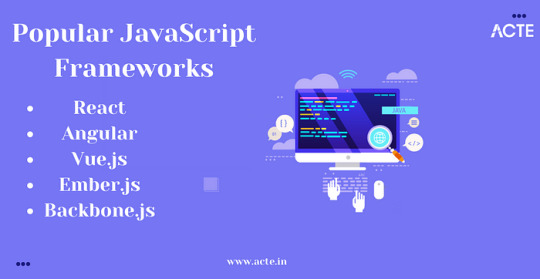
Back-End Essentials
The back-end is where the magic happens behind the scenes. I’ve found server-side languages like Python and Node.js to be my trusted companions. They empower me to build robust server applications, handle data, and manage server resources effectively.
Databases are the vaults where we store the treasure trove of data. My preference leans toward relational databases like MySQL and PostgreSQL, as well as NoSQL databases like MongoDB. The choice depends on the project’s requirements.
Development Environments
The right code editor can significantly boost productivity. Personally, I’ve grown fond of Visual Studio Code for its flexibility, extensive extensions, and seamless integration with various languages and frameworks.
Git is the hero of collaborative development. With Git and platforms like GitHub, tracking changes, collaborating with teams, and rolling back to previous versions have become smooth sailing.
Productivity and Automation
Automation is the secret sauce in a developer’s recipe for efficiency. Build tools like Webpack and task runners like Gulp automate repetitive tasks, optimize code, and enhance project organization.
Testing is the compass that keeps us on the right path. I rely on tools like Jest and Chrome DevTools for testing and debugging. These tools help uncover issues early in development and ensure a smooth user experience.
Frameworks and Libraries
Front-end frameworks like React and Angular have revolutionized web development. Their component-based architecture and powerful state management make building complex user interfaces a breeze.
Back-end frameworks, such as Express.js for Node.js and Django for Python, are my go-to choices. They provide a structured foundation for creating RESTful APIs and handling server-side logic efficiently.
Security and Performance
The internet can be a treacherous place, which is why security is paramount. Tools like OWASP ZAP and security best practices help fortify web applications against vulnerabilities and cyber threats.
Page load speed is critical for user satisfaction. Tools and techniques like Lighthouse and performance audits ensure that websites are optimized for quick loading and smooth navigation.
Project Management and Collaboration
Collaboration and organization are keys to successful projects. Tools like Trello, JIRA, and Asana help manage tasks, track progress, and foster team collaboration.
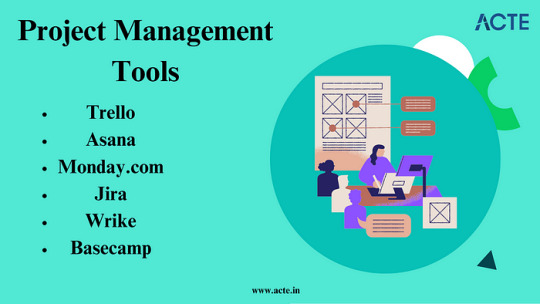
Clear communication is the glue that holds development teams together. Platforms like Slack and Microsoft Teams facilitate real-time discussions, file sharing, and quick problem-solving.
Personal Experiences and Insights
It’s one thing to appreciate these tools in theory, but it’s their application in real projects that truly showcases their worth. I’ve witnessed how this toolkit has brought complex web applications to life, from e-commerce platforms to data-driven dashboards.
The journey hasn’t been without its challenges. Whether it’s tackling tricky bugs or optimizing for mobile performance, my favorite tools have always been my partners in overcoming obstacles.
Continuous Learning and Adaptation
Web development is a constantly evolving field. New tools, languages, and frameworks emerge regularly. As developers, we must embrace the ever-changing landscape and be open to learning new technologies.
Fortunately, the web development community is incredibly supportive. Platforms like Stack Overflow, GitHub, and developer forums offer a wealth of resources for learning, troubleshooting, and staying updated. The ACTE Institute offers numerous Full stack developer courses, bootcamps, and communities that can provide you with the necessary resources and support to succeed in this field. Best of luck on your exciting journey!
In this blog, we’ve embarked on a journey through the world of full stack development, exploring the tools and technologies that have become my trusted companions. From HTML and CSS to JavaScript frameworks, server-side languages, and an array of productivity tools, these elements have shaped my career.
As a full stack developer, I’ve discovered that the right tools and technologies can turn challenges into opportunities and transform creative ideas into functional websites and applications. The world of web development continues to evolve, and I eagerly anticipate the exciting innovations and discoveries that lie ahead. My hope is that this exploration of my favorite tools and technologies inspires fellow developers on their own journeys and fuels their passion for the ever-evolving world of web development.
#frameworks#full stack web development#web development#front end development#backend#programming#education#information
4 notes
·
View notes
Text
What is Django? A Complete Guide for Beginners
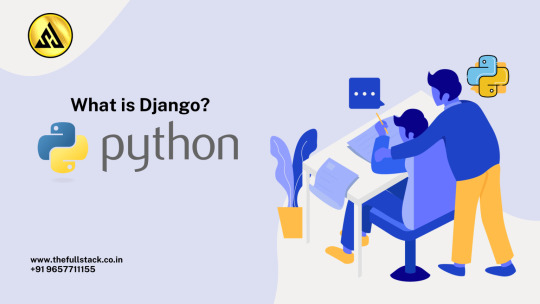
Django is a high-level Python web framework that enables rapid development of secure and maintainable websites. It follows the model-template-view (MTV) architectural pattern and encourages clean, pragmatic design. Popular among developers for its scalability, reusability, and simplicity, Django helps build full-stack web applications with minimal code. Designed to handle backend logic, database interactions, URL routing, and more, Django is ideal for both startups and enterprise-level projects. If you're looking to learn web development in 2025, Django is one of the top Python frameworks for beginners, thanks to its rich documentation, strong community support, and compatibility with modern tools like REST APIs, PostgreSQL, and frontend libraries like React
0 notes